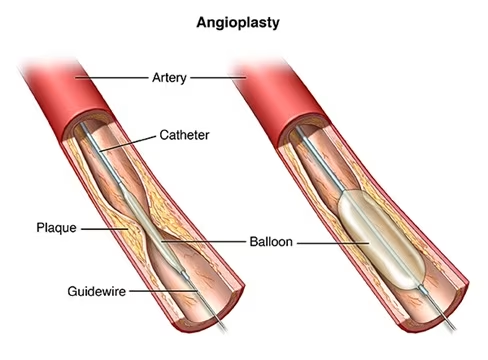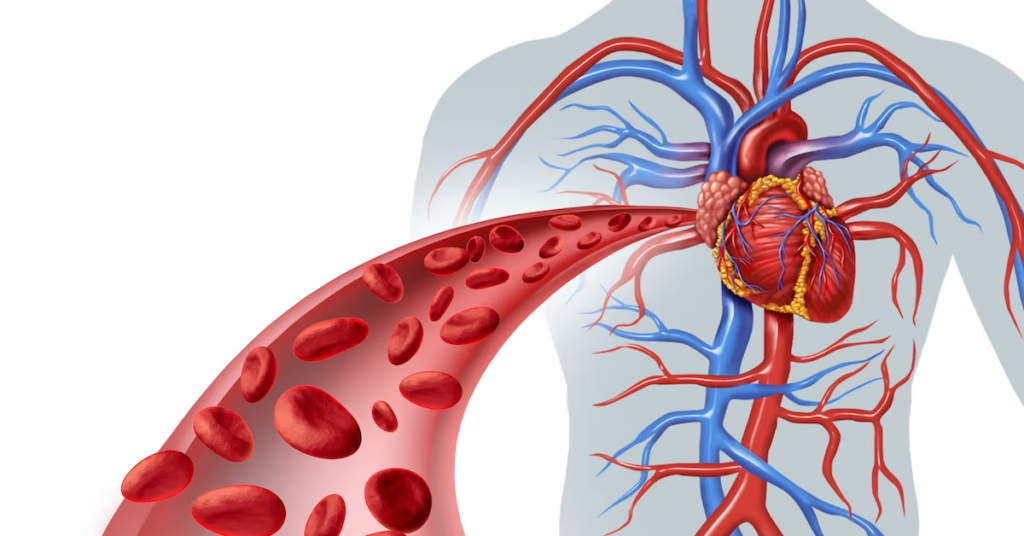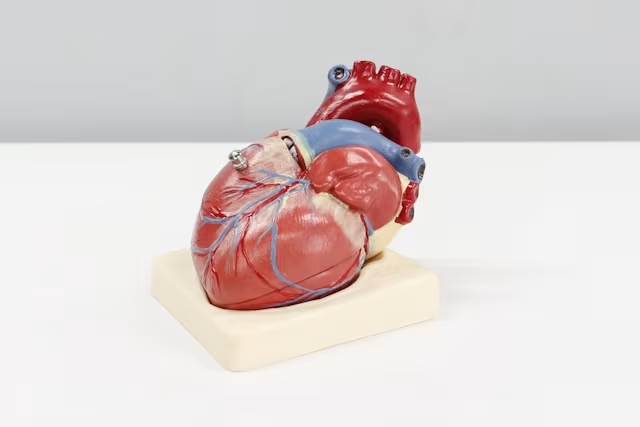Coronary artery disease is a significant health concern in Singapore, particularly among South Asians who are more vulnerable to developing this condition at a younger age.
When medication and lifestyle modifications aren’t enough to manage symptoms, coronary angioplasty offers an effective solution.
This comprehensive guide explores everything you need to know about coronary angioplasty in Singapore, from its benefits and limitations to preparation and recovery.
What is Coronary Angioplasty?

Coronary angioplasty, also known as percutaneous coronary intervention (PCI), is a minimally invasive, non-surgical procedure used to open narrowed or blocked coronary arteries—the blood vessels that supply the heart muscle with oxygen-rich blood.
The procedure involves inserting a flexible catheter with a balloon at its tip through a small puncture in the wrist, arm, or groin artery.
Under X-ray guidance, the catheter is advanced to the narrowed section of the coronary artery. Once in position, the balloon is inflated at high pressure, compressing the arterial plaque against the blood vessel wall and improving blood flow to the heart muscle.
In most modern procedures, a stent (a small metal mesh tube) is placed within the artery after balloon inflation.
This stent acts as a scaffold to keep the artery open and maintain proper blood flow. Many stents today are coated with medication (drug-eluting stents) to reduce the chance of re-narrowing.
You might be interested: Health Screening in Singapore
Why Might You Need Coronary Angioplasty?

You might be a candidate for coronary angioplasty if you have:
- Severe chest pain (angina) that medication cannot adequately control
- Shortness of breath or decreased exercise capacity due to coronary artery disease
- Heart attack requiring emergency treatment to restore blood flow
- Significant blockages identified during a coronary angiogram
- Reduced heart function (heart failure) caused by inadequate blood flow
Coronary angioplasty is often performed after a coronary angiogram—a diagnostic procedure that uses contrast dye and X-ray imaging to identify blockages in the coronary arteries.
You might like: Best JB Health Screening Clinics for Singaporeans
Benefits of Coronary Angioplasty

Symptom Relief
Angioplasty can provide significant relief from symptoms of coronary artery disease, including chest pain (angina) and shortness of breath, thereby improving quality of life.
Minimally Invasive Approach
Unlike coronary artery bypass surgery, angioplasty doesn’t require opening the chest.
It’s performed through a small puncture in a leg, arm, or wrist artery, resulting in less pain and a shorter recovery period.
Related article: Acid Reflux and GERD in Singapore: Causes, Symptoms, and Treatments
Improved Blood Flow
The procedure significantly enhances blood flow through previously narrowed or blocked coronary arteries, improving heart function and reducing the risk of heart attack.
Quick Recovery
Patients typically spend just 1-2 days in the hospital after angioplasty and can return to normal activities more quickly than after open-heart surgery.
In some cases, patients with uncomplicated procedures may even be discharged on the same day.
Advanced Stent Technology
Modern stents are highly effective at keeping arteries open. Drug-eluting stents, which release medication over time, have significantly reduced the rate of re-narrowing (restenosis) to about 3%, compared to up to 20% with older bare-metal stents.
Limitations and Risks of Coronary Angioplasty
Potential Complications
Although generally safe, angioplasty can occasionally cause complications such as:
- Bleeding at the catheter insertion site
- Artery damage
- Kidney damage from contrast dye
- Blood clots
- Irregular heart rhythms
- Heart attack (rare, occurring in less than 1% of cases)
- Stroke (rare, occurring in less than 1% of cases)
Read more: Diabetes Treatment in Singapore: Types, Risks
Re-narrowing Risk
There is a possibility of restenosis (re-narrowing of the treated artery) within six months of the procedure.
With drug-eluting stents, this occurs in about 3% of cases, but the rate can be up to 20% with bare-metal stents.
Not a Permanent Cure
Angioplasty treats the blockage but doesn’t cure the underlying coronary artery disease.
Without lifestyle modifications and medication adherence, new blockages may form.
Need for Continued Medication
After stent placement, patients must take antiplatelet medications (such as aspirin plus clopidogrel or ticlopidine) for a specified period—ranging from one month to one year or longer—to prevent blood clots from forming in the stent.
Read more: Which Cardiologist in Singapore Should You Consider? (Sort by Reviews)
Preparing for Coronary Angioplasty in Singapore
Pre-Admission Testing
Before the procedure, you’ll undergo several tests:
- Blood sampling for urea, serum electrolytes, glucose, and creatinine
- Full blood count
- Prothrombin Time/Partial Thromboplastin Time
- Hepatitis B screening
- Chest X-ray
- 12-lead electrocardiogram (ECG)
Related article: Diabetes Myths Debunked: Separating Fact from Fiction
Important Pre-Procedure Information
- Inform your doctor about any allergies, especially to medications, seafood, iodine, or X-ray contrast dye
- Disclose your complete medical history, particularly regarding peptic ulcer disease, recent strokes, or bleeding tendencies
- If you have diabetes and take metformin, you’ll need to stop this medication for at least 2 days before and after the procedure
- Get a good night’s sleep before the procedure
- You’ll be instructed to fast (no food or drink) for at least six hours before the procedure
- Remove dentures, contact lenses, and jewelry on the day of the procedure
The Coronary Angioplasty Procedure in Singapore
Step-by-Step Process
- Local Anesthesia and Access: The procedure begins with local anesthesia at the access site—typically the wrist (radial artery) or groin (femoral artery). A plastic sheath is inserted into the artery to facilitate the introduction of catheters and other devices.
- Catheter Placement: Under real-time X-ray guidance, a thin guidewire is advanced through the sheath and navigated to the heart. A catheter is then threaded over this wire until it reaches the opening of the coronary artery.
- Contrast Injection: A radio-opaque contrast dye is injected through the catheter, making the coronary arteries visible on the X-ray monitor. This provides a “roadmap” of the coronary arteries and clearly shows where blockages exist.
- Balloon and Stent Delivery: Once the catheter reaches the narrowed artery, a very thin wire with a deflated balloon (and usually a collapsed stent mounted on it) is carefully threaded through the catheter to the blockage site.
- Balloon Inflation: The balloon is inflated, compressing the plaque against the arterial wall and stretching the artery open. If you’re awake during this part, you might feel some chest discomfort, which you should report to your cardiologist.
- Stent Deployment: As the balloon inflates, it expands the stent against the arterial wall. The stent locks into position, creating a scaffold that keeps the artery open after the balloon is deflated and removed.
- Final Check and Removal: After confirming the artery is adequately opened and blood flow is restored, the balloon, wires, and catheter are removed, leaving only the expanded stent in place.
The entire procedure typically takes between 30 minutes and 2 hours, depending on the complexity of the blockages and the number of stents required.
You might be interested: Comprehensive Guide to Colonoscopy in Singapore
Post-Procedure Care in Singapore Hospitals
Immediate Post-Procedure Monitoring
After the procedure, you’ll be transferred to a recovery area such as:
- High Dependency Unit (HDU)
- Intermediate Care Area (ICA)
- Coronary Care Unit (CCU)
Healthcare professionals will closely monitor your:
- Vital signs (pulse, blood pressure)
- Insertion site for bleeding or complications
- Heart rhythm for any disturbances
Sheath Removal and Site Compression
If the femoral (groin) approach was used, the sheath may remain in place for several hours after the procedure.
Once removed, manual compression will be applied to prevent bleeding and promote wound healing.
Hospital Stay
Most patients stay in the hospital for 1-2 days after the procedure. If there are no complications, you may be discharged on the same day or the next day.
Recovery and Home Care After Coronary Angioplasty
Activity Guidelines
- Rest adequately in the first week, even if you feel well
- Avoid strenuous activities, including sexual activity, for at least one week
- Avoid heavy lifting (particularly with the arm if wrist access was used) or putting excessive pressure on your leg (if groin access was used)
- Avoid driving for at least one week after an elective procedure
- Postpone air travel for up to one month (consult your cardiologist for specific guidance)
Wound Care
- Monitor the puncture site for signs of infection, bleeding, swelling, pain, or numbness
- Keep the area clean and dry
- Report any concerning symptoms to your doctor or visit the Emergency department if necessary
Medication Adherence
- Take all prescribed medications exactly as directed, especially antiplatelet drugs
- Aspirin is typically prescribed indefinitely to prevent future heart attacks
- A second antiplatelet medication (clopidogrel or ticlopidine) will be prescribed for a period ranging from one month to one year, as determined by your cardiologist
Follow-Up Care
- Attend all scheduled follow-up appointments
- Participate in cardiac rehabilitation if recommended
- Adopt heart-healthy lifestyle changes, including:
- Quitting smoking
- Regular physical activity (once cleared by your doctor)
- Heart-healthy diet low in saturated fats, trans fats, cholesterol, and sodium
- Stress management techniques
- Weight management
- Blood pressure and cholesterol control
Success Rates and Outcomes in Singapore
The success rate of coronary angioplasty is approximately 95%, depending on the nature and complexity of the coronary narrowing. However:
- In about 5% of cases, the procedure may be unsuccessful, and the artery remains narrowed
- In very few patients (about 1%), complications may require urgent bypass surgery
- There is a possibility of restenosis (re-narrowing) within six months following the procedure
If you experience recurring chest pain after angioplasty, seek medical attention immediately, as this could indicate restenosis or a new blockage.
Coronary Angioplasty in the Singapore Context
South Asians, particularly Indians, are more vulnerable to developing coronary heart disease at a younger age (less than 45 years old).
For these patients, smoking is the most commonly associated risk factor. Those who are obese and currently smoking have poorer outcomes.
Singapore’s healthcare system offers advanced cardiac care with experienced cardiologists performing coronary angioplasty procedures using state-of-the-art facilities and the latest stent technologies.
Frequently Asked Questions About Coronary Angioplasty in Singapore
What’s the difference between angiography and angioplasty?
Angiography is a diagnostic test that uses X-ray and contrast dye to visualize the coronary arteries and identify blockages.
Angioplasty is the therapeutic procedure that follows if significant blockages are found and need treatment.
Are there alternatives to angioplasty?
Yes, alternatives include:
- Medication therapy for less severe blockages
- Coronary artery bypass grafting (CABG) surgery for complex or multiple blockages
- In some cases, lifestyle modifications alone may be sufficient for very mild disease
How long does a coronary angioplasty take to complete?
The procedure typically takes between 30 minutes and 2 hours, depending on the complexity of the blockages and the number of stents required.
Will I be awake during the procedure?
Yes, coronary angioplasty is performed under local anesthesia, meaning you’ll be awake but won’t feel pain at the insertion site.
Mild sedation may be given if you’re anxious, but general anesthesia is not required.
How long will I need to stay in the hospital?
Most patients stay 1-2 days. If the procedure is uncomplicated, you may be discharged on the same day or the next day. Complex cases may require longer stays.
How many stents might I need?
The number of stents depends on how many blockages you have and their locations. Some patients may receive multiple stents during a single procedure.
What type of stent will I receive?
There are two main types of stents: bare-metal stents and drug-eluting stents.
Drug-eluting stents are coated with medication that reduces the risk of restenosis and are commonly used today.
Your cardiologist will determine which type is best for your specific condition.
How long do stents last?
Most modern stents are permanent and designed to last a lifetime. The metal alloy used is inert and does not rust or degrade within the body.
Will I need to take blood thinners after getting a stent?
Yes, you’ll need to take antiplatelet medications after receiving a stent.
This typically includes aspirin (indefinitely) and a second antiplatelet drug like clopidogrel for a period ranging from one month to one year, depending on your specific situation and the type of stent used.
When can I return to work after angioplasty?
Most patients can return to work within 1-2 weeks after angioplasty, though this varies depending on the nature of your work.
Jobs requiring heavy physical labor may require a longer recovery period.
Can the artery become blocked again after angioplasty?
Yes, restenosis (re-narrowing) can occur, typically within the first six months after the procedure.
With modern drug-eluting stents, the rate of restenosis is about 3%, compared to up to 20% with older bare-metal stents.
What lifestyle changes should I make after angioplasty?
Important lifestyle changes include:
- Quitting smoking
- Following a heart-healthy diet
- Regular exercise (once cleared by your doctor)
- Maintaining healthy weight
- Managing stress
- Taking all prescribed medications
- Regular follow-up with your cardiologist
How much does coronary angioplasty cost in Singapore?
The cost varies depending on factors such as the hospital, number of stents required, complexity of the procedure, and your insurance coverage.
It’s best to consult with your healthcare provider and insurance company for specific cost information.
Is coronary angioplasty covered by insurance in Singapore?
Most health insurance plans and MediShield Life in Singapore provide coverage for coronary angioplasty, but the extent of coverage varies.
Check with your insurance provider for details about your specific policy.
Conclusion
Coronary angioplasty is a well-established, minimally invasive procedure that effectively treats coronary artery blockages, providing relief from symptoms and improving quality of life for patients with coronary artery disease in Singapore.
While it comes with certain risks and limitations, the high success rate and relatively quick recovery make it an excellent option for many patients.
Remember that angioplasty treats the blockage but doesn’t cure the underlying disease.
Long-term success depends on medication adherence, regular follow-up care, and sustained lifestyle modifications to manage the risk factors contributing to coronary artery disease.
If you’re experiencing symptoms of coronary artery disease or have been recommended for angioplasty, consult with a cardiologist in Singapore to discuss your specific situation and determine the most appropriate treatment approach for your needs.

